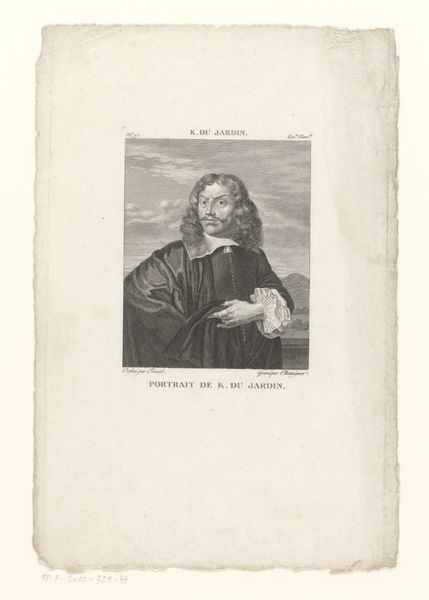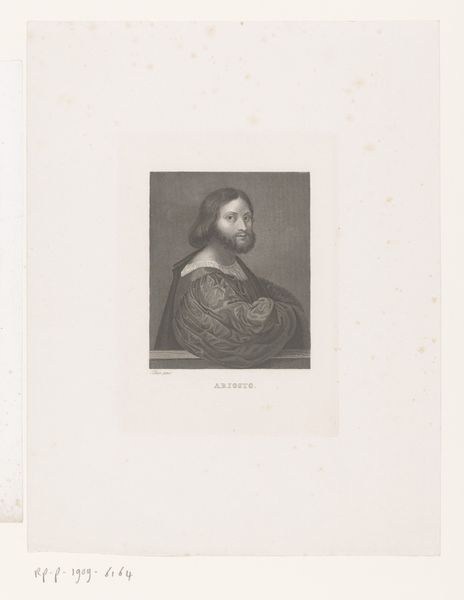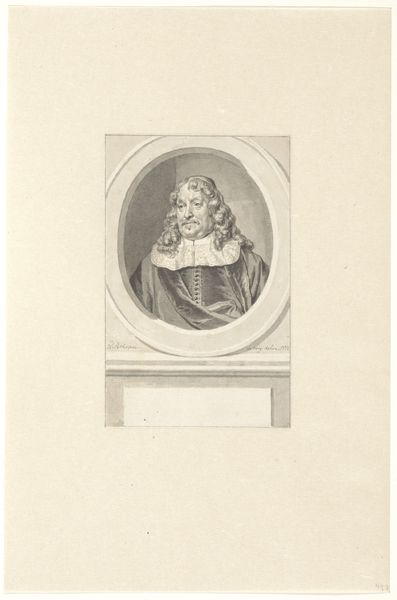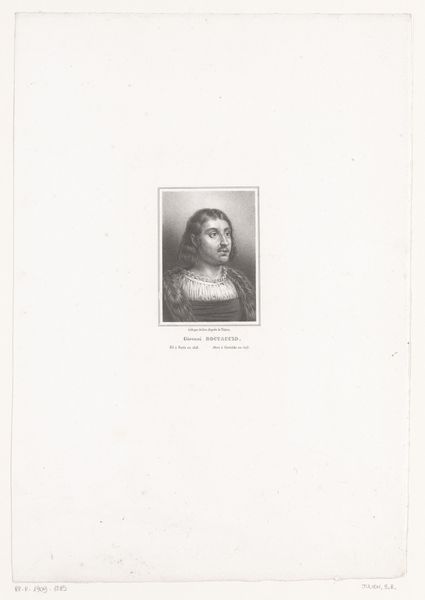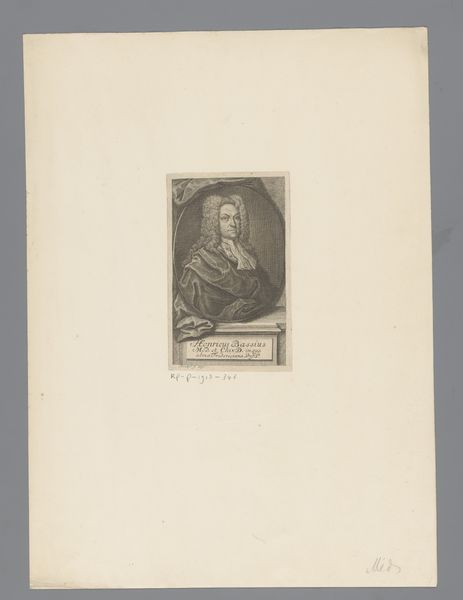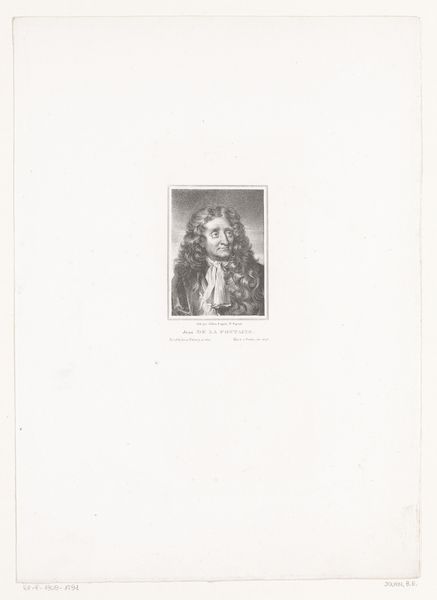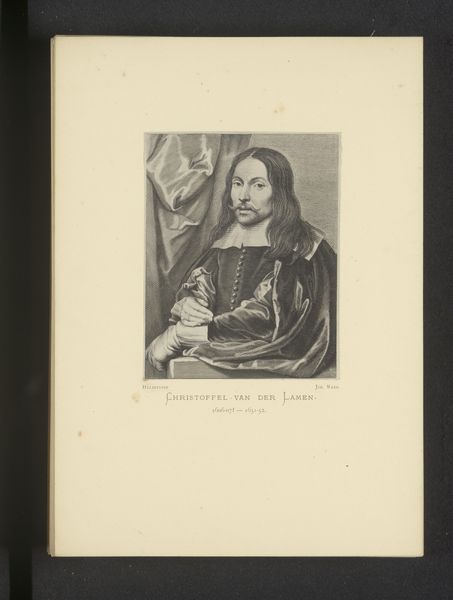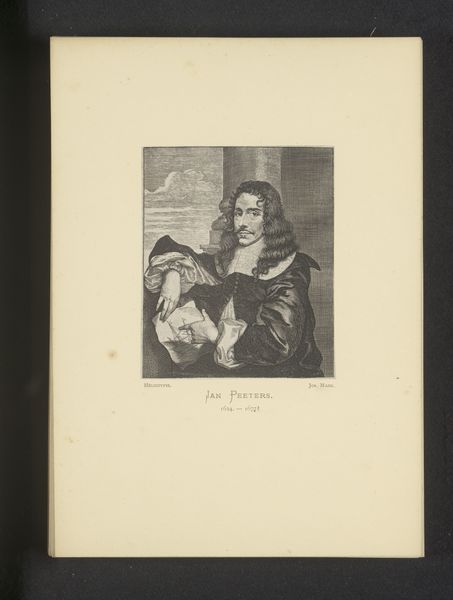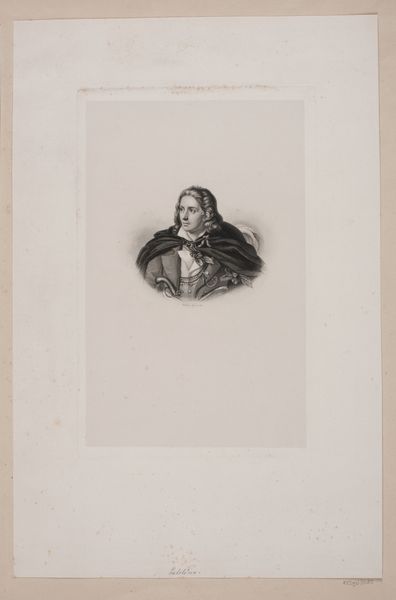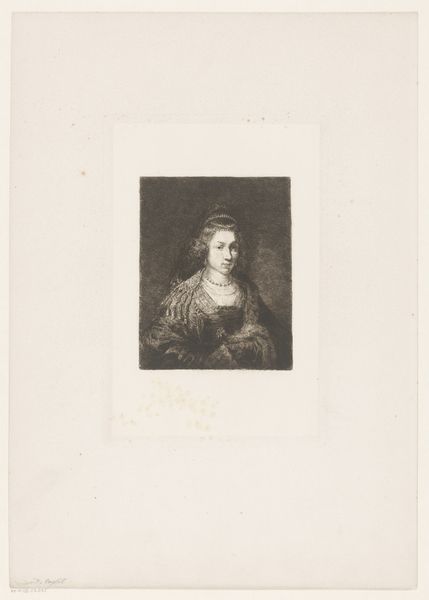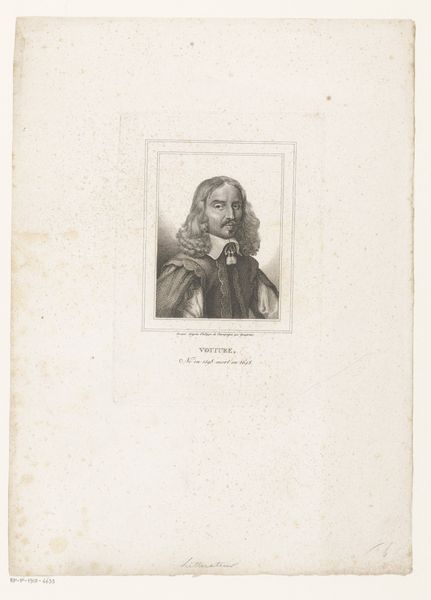
drawing, paper, engraving
#
portrait
#
drawing
#
dutch-golden-age
#
paper
#
engraving
Dimensions: height 406 mm, width 310 mm
Copyright: Rijks Museum: Open Domain
Manuel Esquivel Sotomayor made this print of Karel Dujardin in an unconfirmed year. It’s an engraving, a process that relies on the artist's precise control and skill. The crisp lines you see were carved into a metal plate, likely copper, with a tool called a burin. Ink was then forced into these lines, and the image transferred to paper under high pressure. Look closely, and you'll notice the way Sotomayor varied the line thickness and density to create shading and depth. Engraving was a labor-intensive process, highly valued for its ability to reproduce images accurately and in multiples. This made prints like these crucial for disseminating portraits and other artworks, acting as a kind of pre-photographic media. It’s a process situated between art and industry, demanding both technical skill and artistic vision. Thinking about the material and the making helps us appreciate the role of printmaking in shaping visual culture. It challenges the idea of art as a unique, handmade object, instead emphasizing its potential for wider distribution and consumption.
Comments
No comments
Be the first to comment and join the conversation on the ultimate creative platform.

